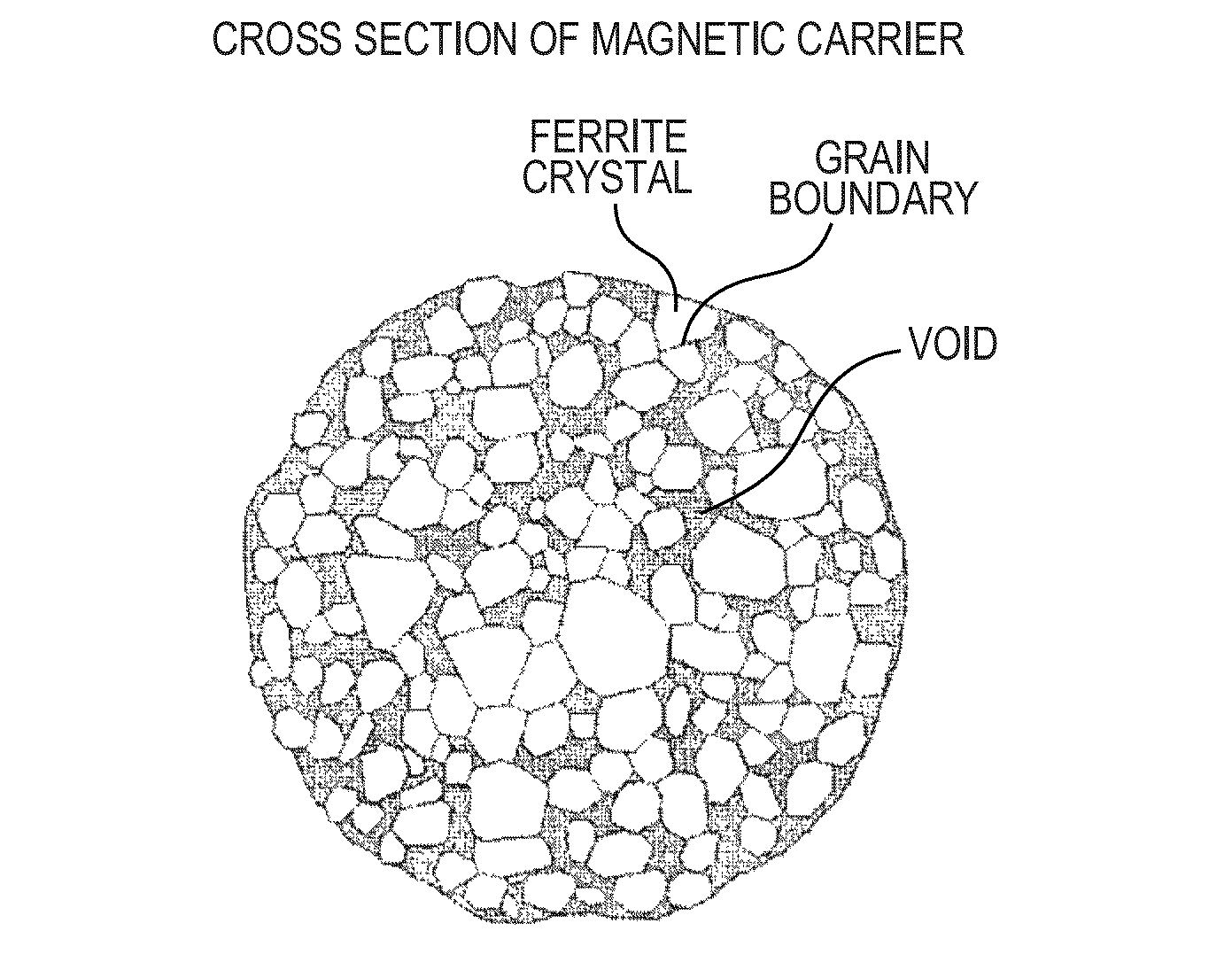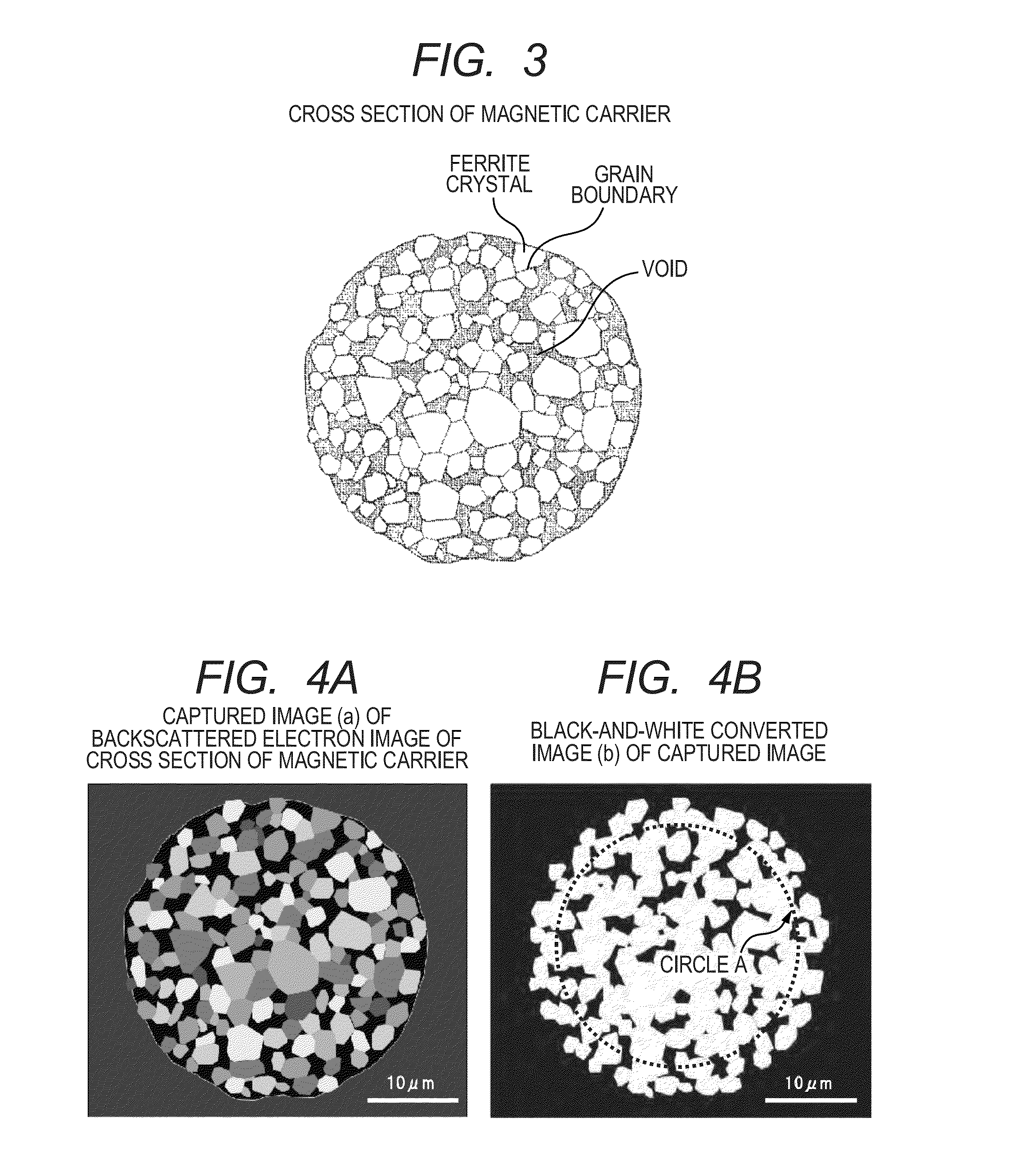Image forming method
a technology of image forming and magnetic carrier, which is applied in the field of image forming method, can solve the problems of insufficient development of toner, inability to keep a sufficient amount of toner, and non-electrostatic adhesive force between magnetic carrier and toner, etc., and achieves the effect of reducing the amount of carrier adhering to the photosensitive member, high image quality, and sufficient image density
- Summary
- Abstract
- Description
- Claims
- Application Information
AI Technical Summary
Benefits of technology
Problems solved by technology
Method used
Image
Examples
example 1
[0325]10 parts by mass of the cyan toner was added to 90 parts by mass of Magnetic Carrier 1, and the mixture was shaken by a V type mixer for 10 minutes to prepare a two component developer A corresponding to the initial state of development.
[0326]Using a modified machine of an imagePRESS C1 made by Canon Inc., the two component developer A was set in a developing unit for a position for black, and an image was formed under an environment of normal temperature and normal humidity (23° C., 50% RH).
[0327]A waveform signal generated using a Function Generator WF1946B made by NF CORPORATION was amplified using a high pressure power supply CAN-076 made by NF CORPORATION. The developing bias to be applied to the developing sleeve was thus obtained. The waveform of the AC component of the developing bias was set to have the so-called Duty ratio of 40:60, the Duty ratio being a ratio of a period in which the voltage value of the developing bias had a voltage value at which the electric fie...
examples 2 to 7
, Comparative Examples 1 to 5
[0354]By the same method as that in Example 1, Magnetic Carriers 2 to 12 and the cyan toner were combined to prepare two component developers. In each of the two component developers, (1) the image density and (2) the amount of the magnetic carrier adhering onto the photosensitive member were evaluated. The result of evaluation is shown in Table 3.
TABLE 3(a) Process speed(b) Process speed(c) Process speed320 mm / s Developing320 mm / s Developing280 mm / s Developingbias Vpp of 1.2 kVbias Vpp of 1.5 kVbias Vpp of 1.2 kVAmount N ofAmount N ofAmount N ofadheringadheringadheringImagemagneticImagemagneticImagemagneticdensitycarrier Ndensitycarrier Ndensitycarrier NDt(cm−2)Dt(cm−2)Dt(cm−2)Example 1MagneticA (1.63)A (0.8)A (1.69)B (2.7)A (1.65)A (0.4)carrier 1Example 2MagneticB (1.48)A (0.6)A (1.56)B (2.4)B (1.52)A (0.4)carrier 2Example 3MagneticB (1.52)B (2.8)A (1.58)C (5.0)A (1.55)B (1.7)carrier 3Example 4MagneticA (1.55)B (1.2)A (1.60)B (4.1)A (1.58)B (1.0)carrie...
PUM
 Login to View More
Login to View More Abstract
Description
Claims
Application Information
 Login to View More
Login to View More - R&D
- Intellectual Property
- Life Sciences
- Materials
- Tech Scout
- Unparalleled Data Quality
- Higher Quality Content
- 60% Fewer Hallucinations
Browse by: Latest US Patents, China's latest patents, Technical Efficacy Thesaurus, Application Domain, Technology Topic, Popular Technical Reports.
© 2025 PatSnap. All rights reserved.Legal|Privacy policy|Modern Slavery Act Transparency Statement|Sitemap|About US| Contact US: help@patsnap.com



